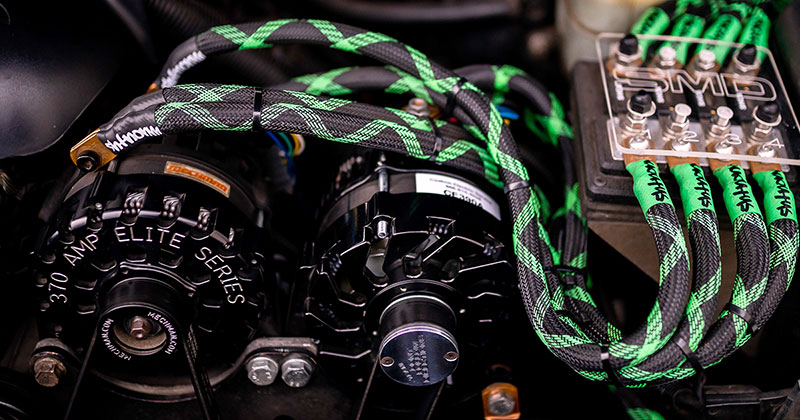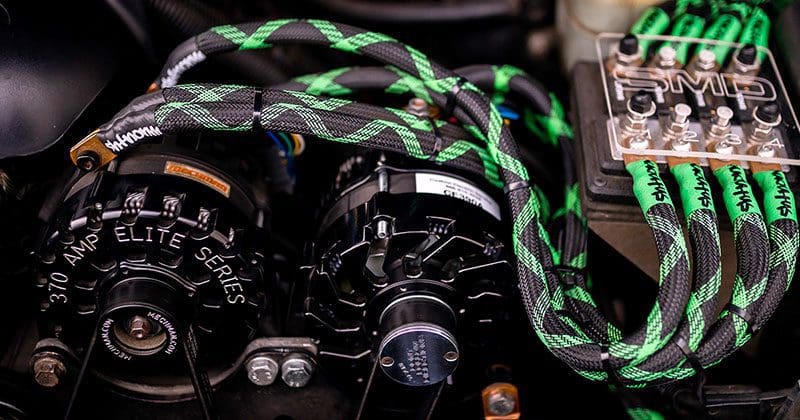Day after day, we see clients who have purchased extraordinarily large car audio amplifiers and expect them to make their full rated power using the stock electrical system in their car or motorcycle. This article will look at amplifier efficiency, how vehicle charging systems work, and why it takes power to make power.
Let’s Talk About Car Audio Power Amp Efficiency
Mobile audio amplifiers need to draw current from your vehicle’s electrical system to function. They need power to feed the circuitry that operates the amp and processes the audio signal. Of course, they also need power to drive your speakers. On the high end, a thoughtfully designed Class-D amplifier may use 90% of the energy it consumes to drive speakers. On average, this number is closer to 80% and drops into the 60% range when amplifiers are loaded down. Class-AB amplifiers, though they typically sound better, peak in the 60% range at full power and can drop into the 30s and 40s at lower output levels.
Where does that power go? Let’s say you have a four-channel amp that is rated to produce 150 watts per channel. If the amp has an efficiency rating of 86%, it will need to consume 698 watts of power to produce that 600 watts. Where does that extra 98 watts go? Almost all of it is converted to heat because of losses in the power supply and output switching stage components. If your electrical system is running at 13.2 volts, the amp will need to draw about 53 amps of current to produce 600 watts of power to your speakers.
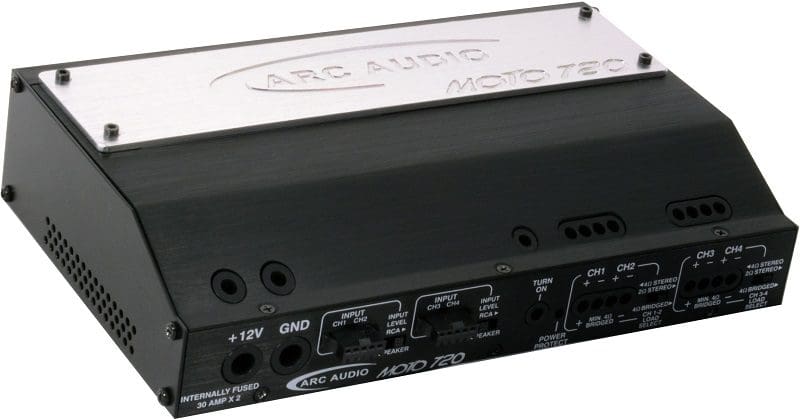
In a second example, let’s say we have a similarly powerful amplifier, but this unit only has an efficiency of 68%. To produce 600 watts of power, it needs to consume 882 watts of power. That’s right; this amplifier is then going to convert 282 watts into heat. As such, the heatsink would need to be three times larger than the preceding amp to maintain reliable operation. In terms of current draw, this second amp will need 67 amps of current to make the same power. That’s an extra 14 amps that will be converted to heat and nothing more.
Which amplifier would you buy?
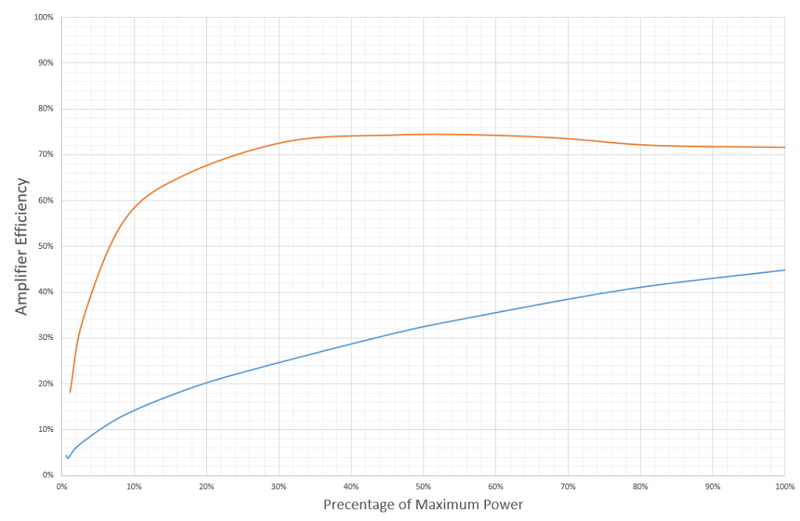
Automotive Electrical and Charging Systems
At the most basic level, the electrical system in our car or truck, or on a motorcycle or side-by-side, comprises a battery and an alternator. The battery is there to start the engine. Once started, the alternator takes over the operation of the vehicle and recharges the battery. If sudden high-current requirements exceed the current production capabilities of the alternator, the battery will often provide some extra current, albeit at a lower voltage.
Vehicle manufacturers are doing everything they can to improve the efficiency of modern vehicles. The switch from halogen and HID headlights to LED can reduce current consumption by several amps per light. Less current draw means the car can be wired with smaller cabling, which saves additional weight and increases fuel economy while improving handling, road-holding and braking performance.
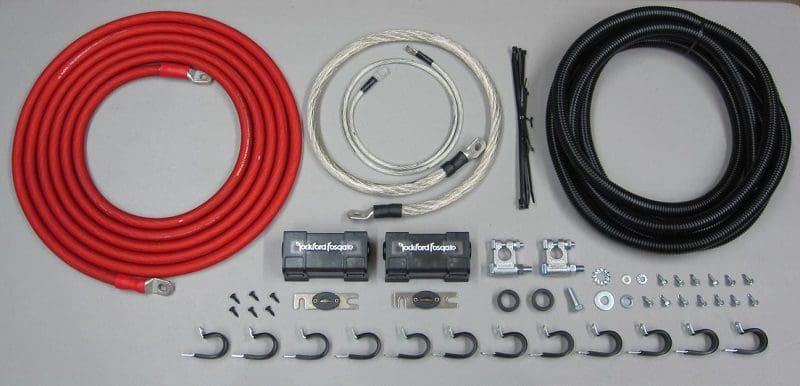
Let’s say you have a typical pickup truck. It could be a Ford, Chevy or Toyota. Unless you’ve opted for a special towing or heavy-duty package, the truck is going to come with an alternator capable of providing about 200 amps of current. The alternator needs to have enough capacity to run the engine, the computers, safety system, climate control system, lighting and such accessories as security and maybe a keyless entry system. Even the radio needs a couple of amps of current to power the display and keep the processor running. The alternator also needs to charge the battery, which can consume a significant amount of current if the vehicle has been sitting for a few days.
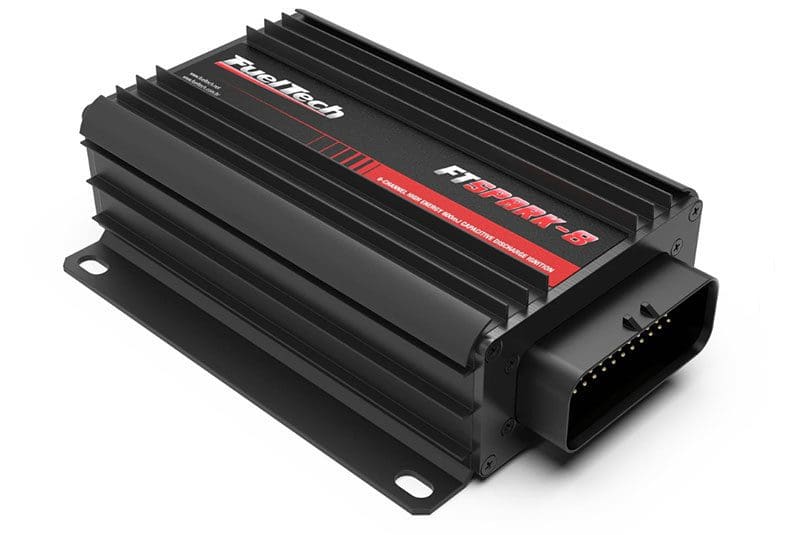
To give you an idea of how much power you have available, a 2015 Civic comes with an alternator capable of producing about 95 amps of current. A 2018 Dodge Challenger with the 5.7L V8 has an alternator in the 160-amp range. A newish EcoBoost Mustang has a roughly 175-amp capacity alternator.
If you want to undertake a little experiment, have four friends hop in the car with you and go for a drive. Turn on every electrical accessory you can find. That will be the defroster, blower motor, high-beams, the stereo and heated seats. Now roll the windows up and down consistently and, if the vehicle has one, open and close the sunroof. You can kill the car battery while driving because a modern alternator only provides enough current for the average load the vehicle will see – not the peak load.
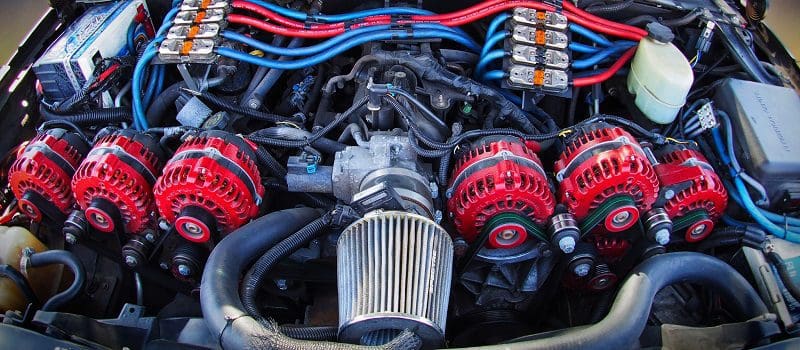
Another consideration is that alternators are rated to produce their current at engine speeds well above idle. If you’re sitting in a parking lot and the vehicle has a 180-amp alternator, it will only produce 130 amps at idle. A 240-amp alternator makes about 115 amps at idle. In the same case size, more peak current capacity results in a reduction of output current at lower engine speeds.
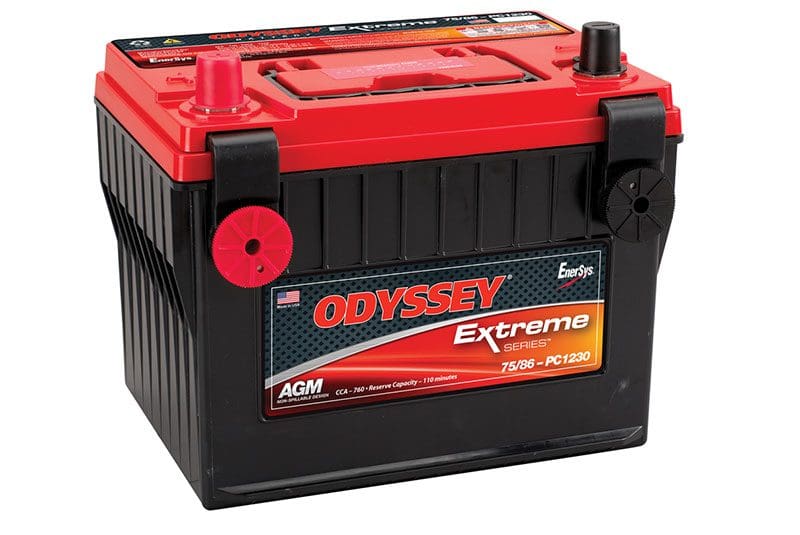
Worse, alternators lose performance as they heat up. A typical three-phase alternator can lose 30% of its output capacity. High-end alternators that use high-quality six-phase windings may only drop 15%. This heat problem is a self-compounding issue, just like under-sizing the wiring in your vehicle. As you approach the limits, you end up with less voltage and the load will demand more current, which makes things hotter and reduces output even more.
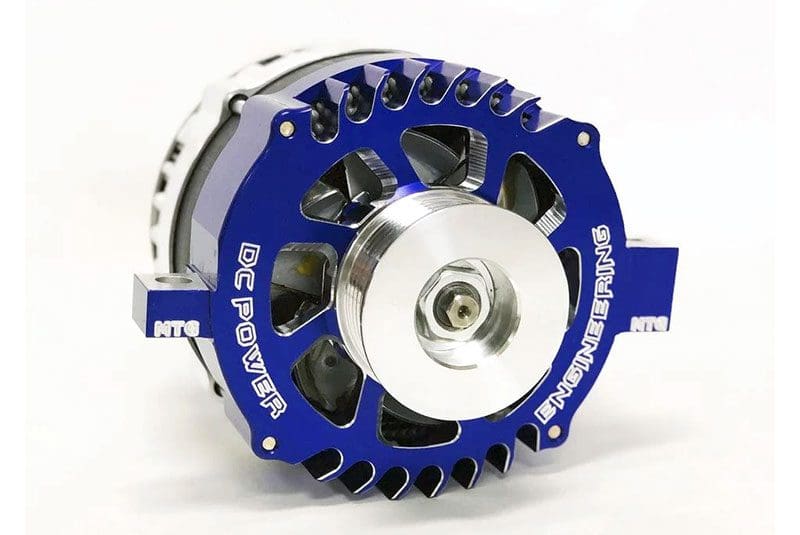
Electrical Systems on Motorcycles and Powersports Vehicles
Upgrading audio systems on motorcycles is challenging. It would be best if you chose the most efficient speakers and amplifiers possible. Why? The stock charging system is often only capable of delivering 30 amps of current. Upgraded stators may be able to bump this to over 50 amps, but that still isn’t very much when you have an ignition system to run. Would you have 30 to 35 amps of current leftover for a stereo? Maybe. Even if you have picked the 86% efficient amp we talked about at the beginning of this article, you can only produce about 400 watts to the speakers. If you chose that 68% efficient amp, that number drops to a little over 300 watts as the rest of the energy is wasted as heat.
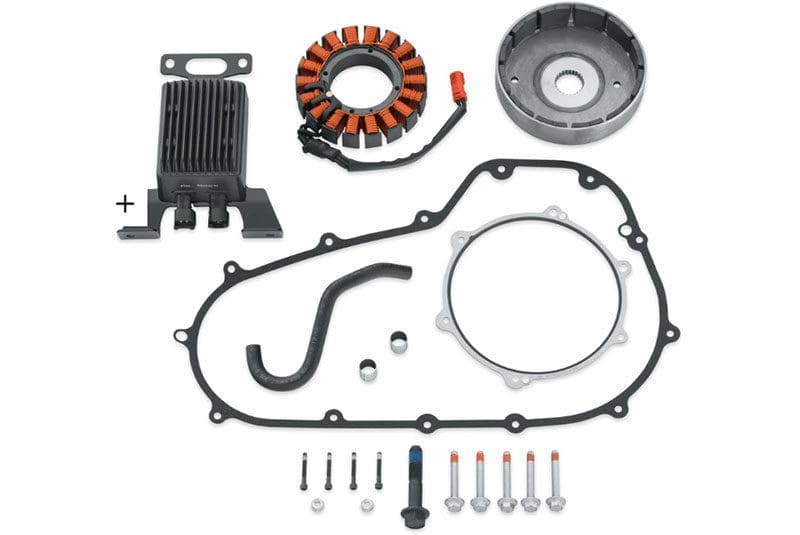
Lastly, don’t expect the battery to help much. In a typical motorcycle size, as you’d find on a Street Glide, they are rated for 32 amp-hours and have a cold-cranking amp capacity of 500 amps. Compare that to the battery in a full-size sedan at 100 amp-hours and almost 1,000 cold-cranking amps.
Upgrade Your Electrical System for Better Audio Performance
If you plan on having a large amplifier, a high-performance ignition system or lots of lighting installed on your vehicle, then drop by your local specialty mobile enhancement retailer today to find out what upgrades are available. Feeding your amp or accessories with the power they need is the only way to ensure that they will provide the performance and reliability you expect from your investment.
Lead-In Image provide by Luke Schaller at Schallerimages.
This article is written and produced by the team at www.BestCarAudio.com. Reproduction or use of any kind is prohibited without the express written permission of 1sixty8 media.

